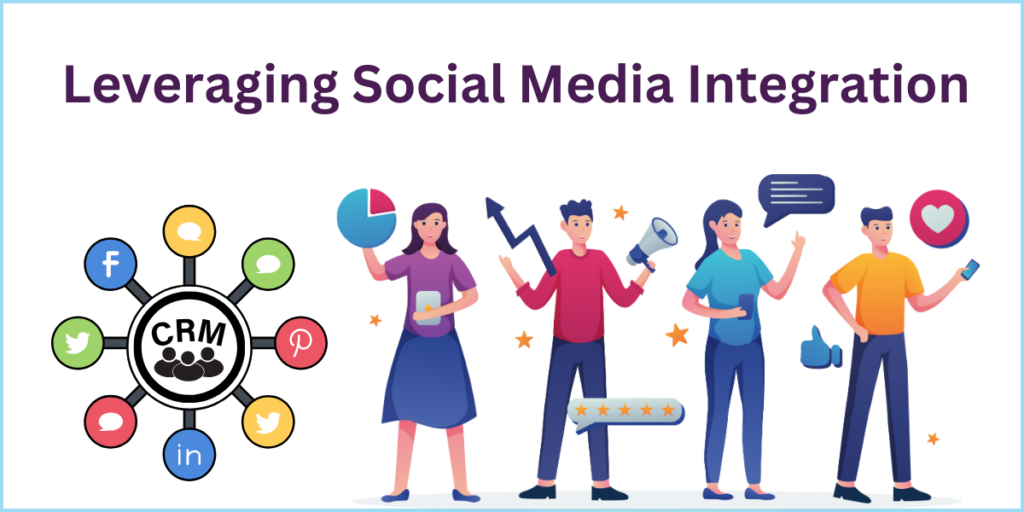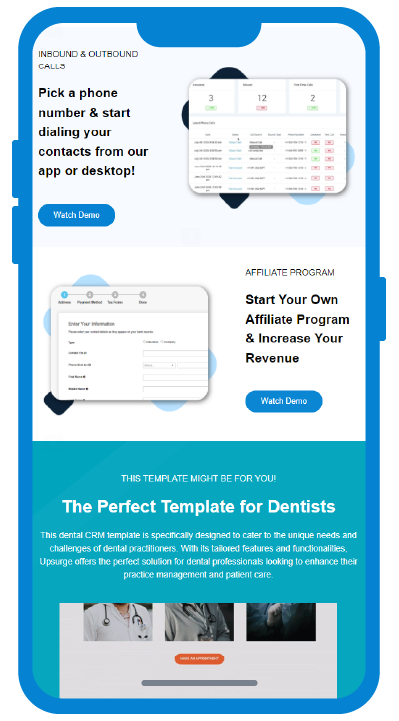
A strong online presence is essential for business success in the digital age. Effective Customer Relationship Management (CRM) systems are crucial for managing customer relationships and boosting website traffic. This blog post explores how to use CRM to increase website traffic, improve customer engagement, and drive long-term growth.

Businesses use Customer Relationship Management (CRM) to manage interactions with current and potential customers through strategy and technology. It involves collecting, analyzing, and utilizing customer data to foster better relationships and drive business growth. The role of CRM goes beyond just managing contacts; it’s about understanding customer preferences, behavior, and needs to provide a personalized experience.
What is the role of CRM in increasing website traffic?
CRM (Customer Relationship Management) systems help enhance website traffic by enabling personalized interactions, segmenting audiences for targeted content, and utilizing customer data to tailor marketing strategies effectively.

One of the core principles of using CRM to increase website traffic is audience segmentation. By categorizing your audience into distinct groups based on their demographics, behavior, interests, and preferences, you can tailor your website content and marketing messages to resonate with each group. This level of personalization enhances user experience and encourages visitors to explore more of your website’s offerings.
“40% of CRM users say their CRM Effectively aligns sales and marketing teams.”
CRM systems provide valuable insights that allow you to create buyer personas representing different customer types. These personas enable you to identify which segments will likely engage with specific content, products, or services on your website.

Email marketing remains a potent tool for driving website traffic. CRM systems enable you to craft highly personalized email campaigns based on customer data. By sending relevant and timely content to your subscribers, you can pique their interest and direct them to visit your website for more information.
For example, if a CRM system identifies a customer’s interest in a particular product category, you can send them targeted emails featuring new arrivals or special offers. This increases the chances of visitors clicking through to your website and improves their perception of your brand as customer-oriented.

CRM systems play a vital role in lead nurturing, guiding potential customers through the buying journey until they’re ready to purchase. CRM systems help you identify where a lead stands in the sales funnel by tracking customer interactions and behavior on your website. You can provide the right content and offers to move them closer to conversion.
Automated lead nurturing workflows can be set up within CRM systems to send targeted content, such as informative blog posts, case studies, and product demonstrations. As leads engage with this content, they become more informed and are likely to convert into paying customers.
How does CRM contribute to lead conversion and nurturing?
CRM systems track customer behavior to help businesses understand their place in the sales funnel. By sending relevant content and offers, CRM aids in nurturing leads and guiding them toward conversion.
With centralized data storage and automated data entry, CRM systems eliminate the risk of errors associated with manual record-keeping. This ensures that your sales team works with accurate and up-to-date information.

Content marketing is a cornerstone of driving organic website traffic. CRM systems provide a treasure trove of customer data that can inform your content strategy. By analyzing your audience’s favorite topics, products, or services, you can create content that addresses their pain points and interests.
“74% of businesses say CRM Tech gives better access to customer data”
For instance, if your CRM data indicates that a particular audience segment frequently engages with articles about sustainable living, you can develop in-depth blog posts or videos about eco-friendly practices or products. This content will attract more visitors and position your brand as an authority in the field.
CRM systems provide valuable insights into your sales performance. You can analyze data on lead conversion rates, sales cycle duration, and more, allowing for data-driven decision-making.

High levels of customer engagement can significantly impact website traffic. CRM systems help you foster engagement by enabling personalized interactions and proactive outreach. Customers are more likely to engage with and share content from a website that values and understands them.
By tracking customer interactions across various touchpoints, including social media, email, and website visits, CRM systems allow you to send relevant messages and offers at the right time. This level of engagement encourages repeat visits and referrals, contributing to increased website traffic.
Can CRM assist in creating engaging content?
Absolutely. CRM data reveals customer preferences and interests, helping businesses tailor content that resonates. This engagement-focused content attracts visitors, leading to increased website traffic.

Social media platforms are powerful channels for driving traffic to your website. Integrating CRM systems with social media management tools can streamline social media marketing. By syncing customer data between your CRM and social media platforms, you can create targeted ads and posts that resonate with specific segments of your audience.
For example, suppose your CRM identifies a segment of customers who have shown interest in a specific product category. You can advertise products of a particular type on social media and direct customers to a designated landing page on your website.
What’s the significance of integrating social media with CRM for website traffic growth?
Integrating CRM with social media enables targeted advertising and posts. By syncing customer data, businesses can craft content that appeals to specific segments, driving traffic to their website.
Implementing a CRM system involves configuring it to match your business processes. This may include customizing fields, workflows, and security settings.

Effective CRM implementation isn’t just about executing strategies; it’s also about continuous improvement. CRM systems offer analytics and reporting features to monitor the effectiveness of marketing efforts. Businesses can improve their design over time by tracking metrics such as click-through, conversion, and bounce rates. For instance, if a particular segment of your audience consistently engages with content related to a specific topic, you can create more content to maintain their interest and drive additional traffic.
Can CRM help optimize content creation for SEO?
Absolutely! The data from your CRM provides valuable insights into the trending topics that resonate with your audience. Creating SEO-friendly content around these topics improves search engine visibility, leading to higher organic website traffic
In a digital age where attention spans are limited, and competition is fierce, leveraging CRM systems to increase website traffic is a strategic necessity. By segmenting your audience, personalizing your communication, nurturing leads, and creating engaging content, you can create a dynamic online presence that resonates with your customers. Through integrating social media, continuous monitoring, and data-driven adjustments, CRM empowers you to boost website traffic, foster lasting customer relationships, and drive sustainable growth.

Best CRM Software for Sales Prospecting: Transform Your Sales Prospecting Struggling to turn cold leads into paying customers? You’re not alone. In today’s competitive…
Event Planner’s Guide to CRM: How to Save Time, Cut Costs, and Maximize Revenue Event planning is a high-stakes business. Whether it’s a corporate…
The Importance of Project Portfolio Risk Management Are unmanaged risks in your project portfolio costing you time and money? Project portfolio risk management is…